|
LUXMAN
vintage
audio |
|
LUXMAN
vintage
audio |
Luxman SQ 507X / SQ 505X integrated amplifiers

General:
Around 1970 Luxman company came with its first "high quality" integrated amplifier on the European market. This amplifier was a modern design with excelent characteristics. It had a full complementary output stage and a differential input stage of the power amplifier. It was fully symmetric supplied and the power supply stage was generously built.
The amplifier was very well built and specially the power amplifier stages were an example of compact and slick electronic design and good amplifier building practices.
The 505X is a lower powered version of the 507X.Description:
The Luxman SQ-505X is the newest transistorized pre-main amplifier with full advantages yielded by the very circuitry theoretically regarded as the best one under exhaustive study of Luxman's engineering and designing. Based on the styling of the renowned predecessor, the SQ-505, further refinement was applied in parallel with improvement of the quality; The SQ-505X really deserves the name of the decisive model in this output and price bracket. Main amplifier section integrates full stage direct coupling circuit without output condensers by adoption of dual power supply system in order to procure sufficient damping factor and power character even to the extreme low end frequency. The output stage with pure complementary system completely eliminates cross-over distortion. The fore-stage adopts 2-stage differential amplifiers, which ensure very stable performance eliminating the unpleasant shock-noise at switching the mains power. Pre-amplifier section is equipped with 3-stage direct coupling circuit at equalizer stage. Combination of PNP-NPN-PNP transistors inherently superior in mains power utilization ensures the maximum linearity. The Phono terminals are designed to have the withstand input voltage 300mV 1KHz in view of dynamic range of various programme sources. The silicon transistors of ultra low noise figure are adopted against noise characteristics throughout whole stages. Specifications Power output: 30 watts per channel into 8 (stereo) Frequency response: 10Hz to 60kHz Total harmonic distortion: 0.04% Damping factor: 30 Input sensitivity: 2mV (MM), 80mV (line) Signal to noise ratio: 63dB (MM), 80dB (line) Semiconductors: 31 x transistors, 2 x diodes, 4 x varistors Dimensions: 450 x 160 x 268mm Weight: 10kg.
Special futures:
The most remarkable thing about this amplifier is that the driver- and power- transistors were also directly soldered to the poweramp-pcb: so no extra wiring was needed. That was quite remarkable in these days. The specifications were very good as you can see at the picture below. It was one of the first Japanese transistor amplifiers starting a new audio era. It incorporates the first generation transistors designed in Japan specially for audio purposes. Later Luxmans were built with transistors specially designed for audio. This Luxman SQ 505 & 507 amp was built to be a fast and powerful audio machine with good speaker control. It had good tone-control possibilities on front.
SQ505x Specifications:
Form Solid-state integrated amplifier <Power amplifier part> Consecutive output 50W/50W (4ohms)
35W/35W (8ohms)
25W/25W (16ohms)Music power 60W /channel (8ohms) THD Less than (10W) 0.1%
Less than (40W) 0.2%Frequency characteristic 10Hz - 50000Hz +/-1 dB Input sensitivity 0.5V (40W, 8ohm) Input impedance 50kohm Remains noise 0.5mV or less Dumping factor
1kHz: 45 (8ohms)
90 (16ohms)
100Hz: 35 (8ohms)
70 (16ohms)Attenuator -12dB <Preamplifier part> Frequency characteristic 20Hz - 50,000kHz +/- 2 dB THD 0.1% or less (1kHz, 1V) Remains noise 100 microvolts or less Crosstalk 55dB or better An Output voltage/impedance Pre Out: Less than 1V/100ohm
Rec Out : 100mV/100 ohms or less
DIN: 50mV/75kohmInput sensitivity/impedance
(Output 1V)Tape(9.5cm): 2mV/150kohm
Tape(19cm): 2.2mV/150kohm
Phono1:2mV/50kohm
Phono2:2mV/30kohm, 50kohm, 100kohm
More than AUX1:100mV / 75kohm - 100kohm
AUX2:600mV/100kohm
Tape Monitor: 350mV/100kohm
DIN: 350mV/100kohmMaximum input (1kHz) Tape Head:80mV
Phono:300mV
AUX: 3.0VSN ratio Tape Head: 70dB or more
Phono: 70dB or more
AUX: 85dB or more
Tape Monitor: 80dB or more
DIN: 70dB or moreEqualizer Tape Head(9.5cm, 19cm): NARTB
Phono:RIAATone control LUX scheme NF type turnover roll-off frequency switching type
Bass: 600Hz, 300Hz, 150Hz, Defeat
Treble: 1.5kHz, 3kHz, 6kHz, DefeatFilter Low Filter: 100Hz, 6dB / oct
High Filter: 5kHz, 6dB / octA low boost 80Hz, 6dB / oct Extra Tape monitor switch
DIN connector frontThe semiconductor used
Transistor (27 pieces) :2 2SA 485
16 2SC 369
2 2SC 485
2 2SC 627
1 2SC 734
4 other
Diode 2DSs 13x
DS16B: 3xSupply voltage AC100V - 240V Power consumption At no-signal: 15VA
At maximum output: 150VADimensions Width 451x height 147.5x depth of 268mm Weight 10.5kg
Not the X version. ^
The X version. ^
User Manual:
Download the user manual + schematics of the Luxman SQ507x here in PDF format.
Download the usermanual + schematics in PDF of the Luxman SQ505x in PDF here.
Schematic:
The schematic diagram shows a 3 stage amplifier: RIAA amp, control amp, output power amp.
The RIAA amp is a DC-coupled 3 transistor amp with low noise PNP silicon transistors, with RIAA correction network in the NFB, it is of quite conventional design. It is capable of taking input signals of up to x100 above the average phono-cartridge levels without causing overload problems.
The tone control unit consists of 2 stages, plus buffer stage and allows extensive tone control, with the control taking action on selectable frequencies. The tone control can be switched off by selecting the "defeat" position.
The Power amp is a DC coupled class AB amp with differential input stage and a full complementary OTL/OCL output stage, a compact and modern design. NFB is moderate. It is fully symmetric supplied.
The power supply stage is generously built, with a stabilized section for the preamps.
Distortion and noise levels of this amp are low.
The transistors used were modern high speed transistors specially made by NEC and Toshiba in Japan for audio applications.
Reliability of this design appeared to be very high. There is no serious speaker protection employed in this design.
The power amplifier module: copper side of the pcb, with the heatsink directly mounted to the pcb.
The power amplifier module turned around to the component side.
A not very successfull repair of such a module.
another version of drivers.
The legendary 2SC1161 of NEC, several different types were used by Lux.
Schematic diagram of this power module. ^
Modifications:
This amp is greatly DC-coupled, unfortunately the coupling capacitors are on some places not of high quality (tantallum) and started to give problems in the control amp section after several years, due to DC-leakage through the variable resistors and switches. This problem could easely be solved by replacing the capacitors by polypropylene's of the same value and voltage.
Also the low cut switch can easely be modified into a subsonic filter switch, by modifying the capacitors of the low cut section. A subsonic filter is indispensable when playing vinyl records.
The power supply main capacitors value can extended together with the rectifier diodes to make the supply even more rugged that it already is, the low frequencies benefit from this, 10.000 uF same voltage is a good value, splitting up the main psu is also a good idea: this is using 2 diode sections and 2 capacitor sections, for each power amp one. Specially the SQ505x benefits from good quality, high value capacitors in the power section.
For better speaker control the speaker switch can be omitted and hardwired with good quality stranded copper wire, the low frequencies and the sound image benefit from this. A speaker protection pcb can be installed in the SQ 505 & 507 amps.
Photo: Arthur de la Court
This is a picture of a faulty electrolytic capacitor that was found in the power suppy unit (psu) of a Luxman SQ507X. As you can see it is heavely corroded and got very hot, one connection lead is completely missing, it was corroded away by the acids coming out of the cap as it started leaking. The cap did not function anymore and consequently the psu started causing hum in the sound of the amp.
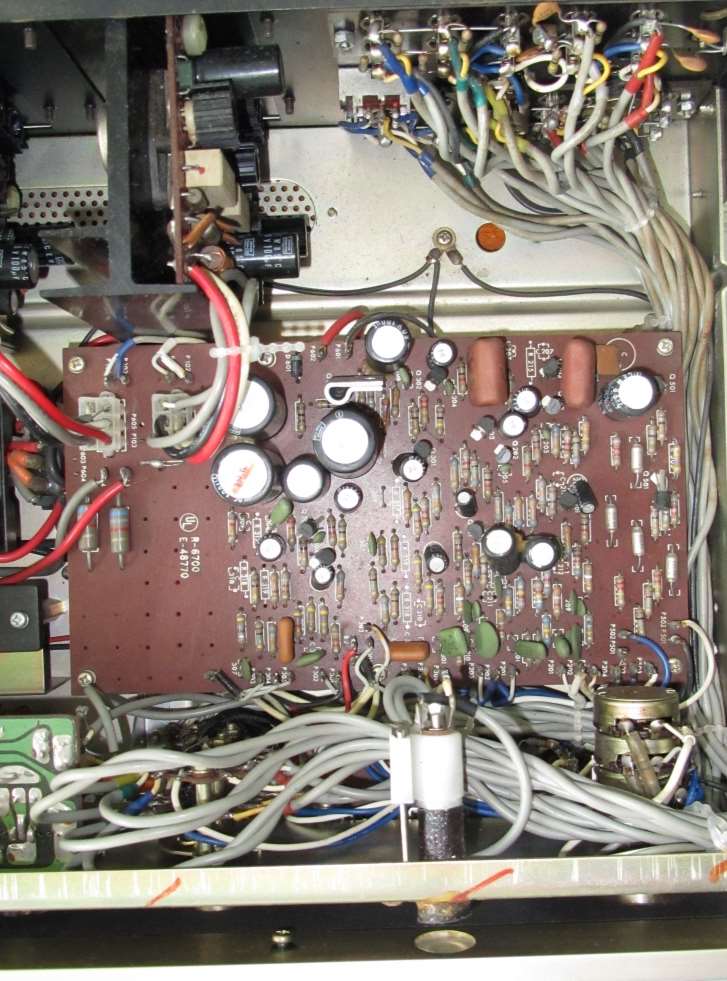
The 505x- (v2) version inside.
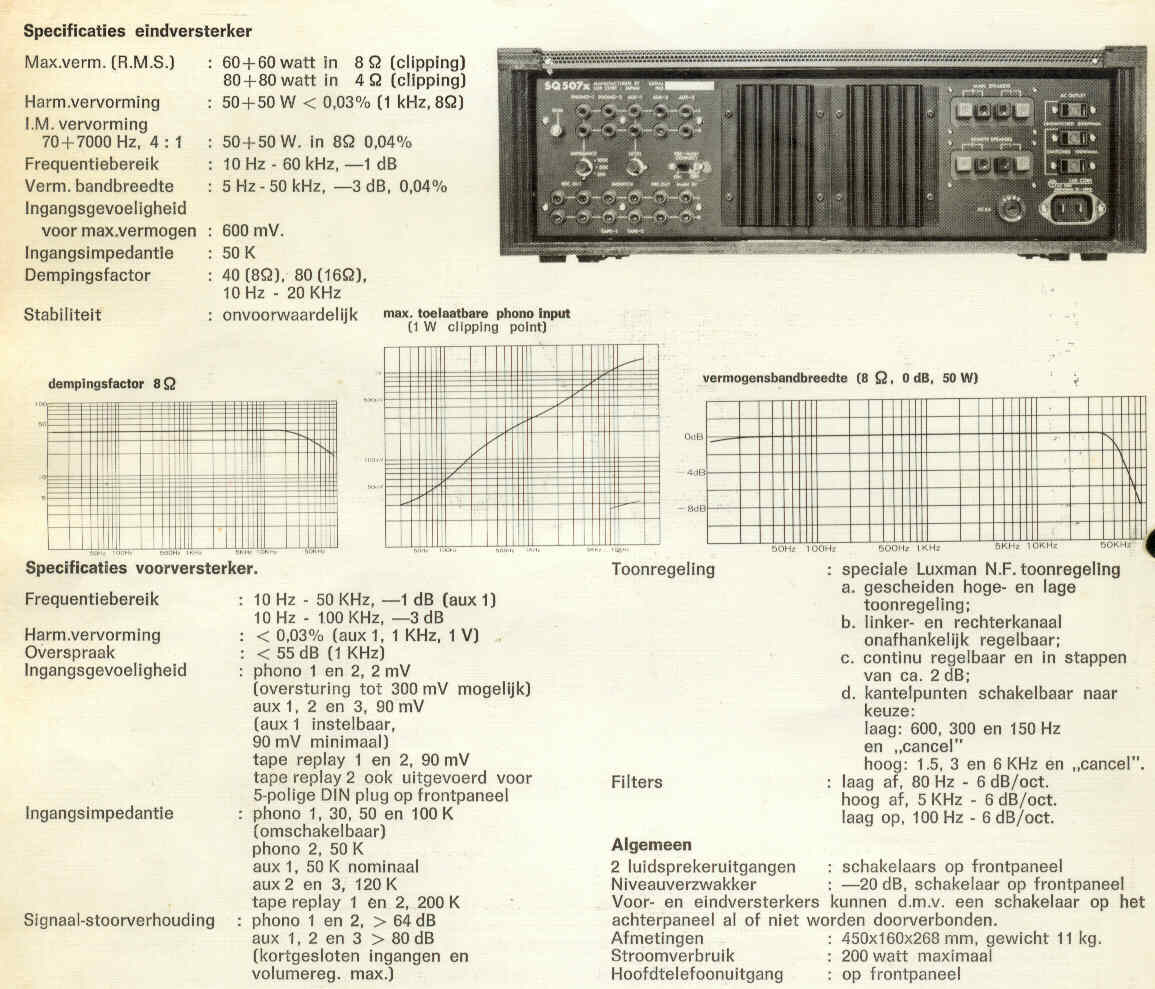

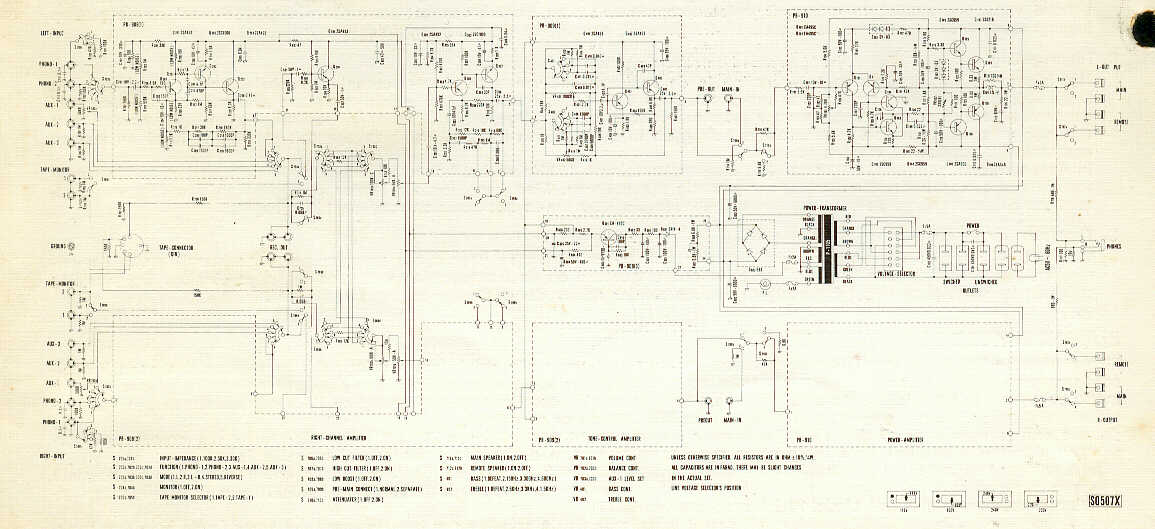
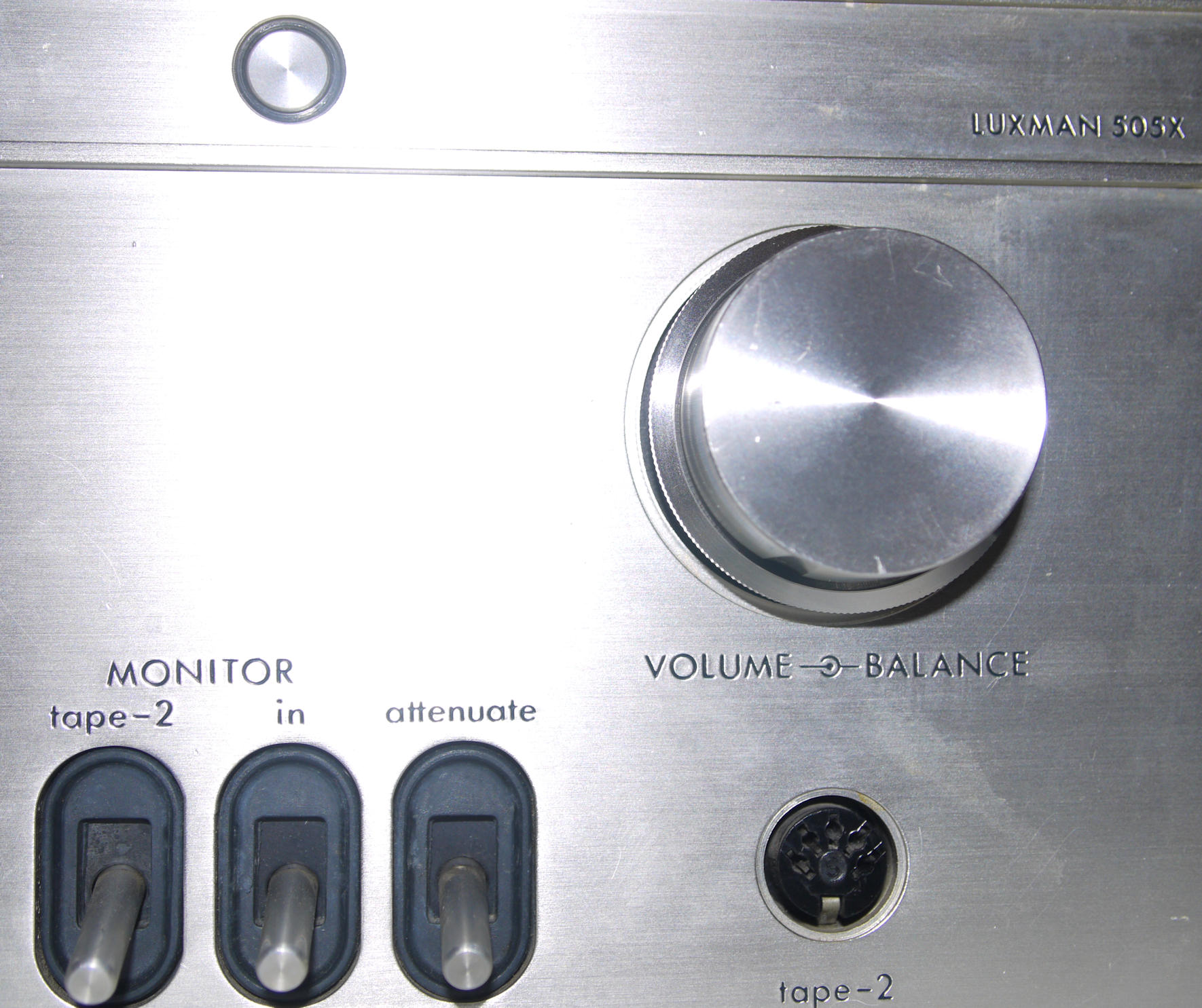
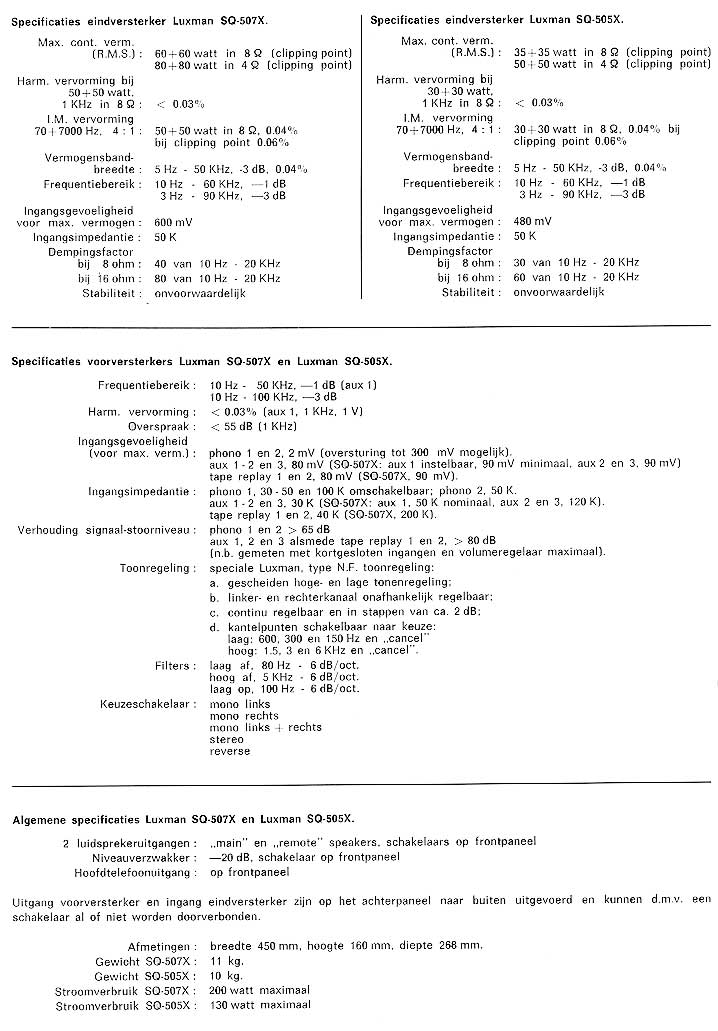
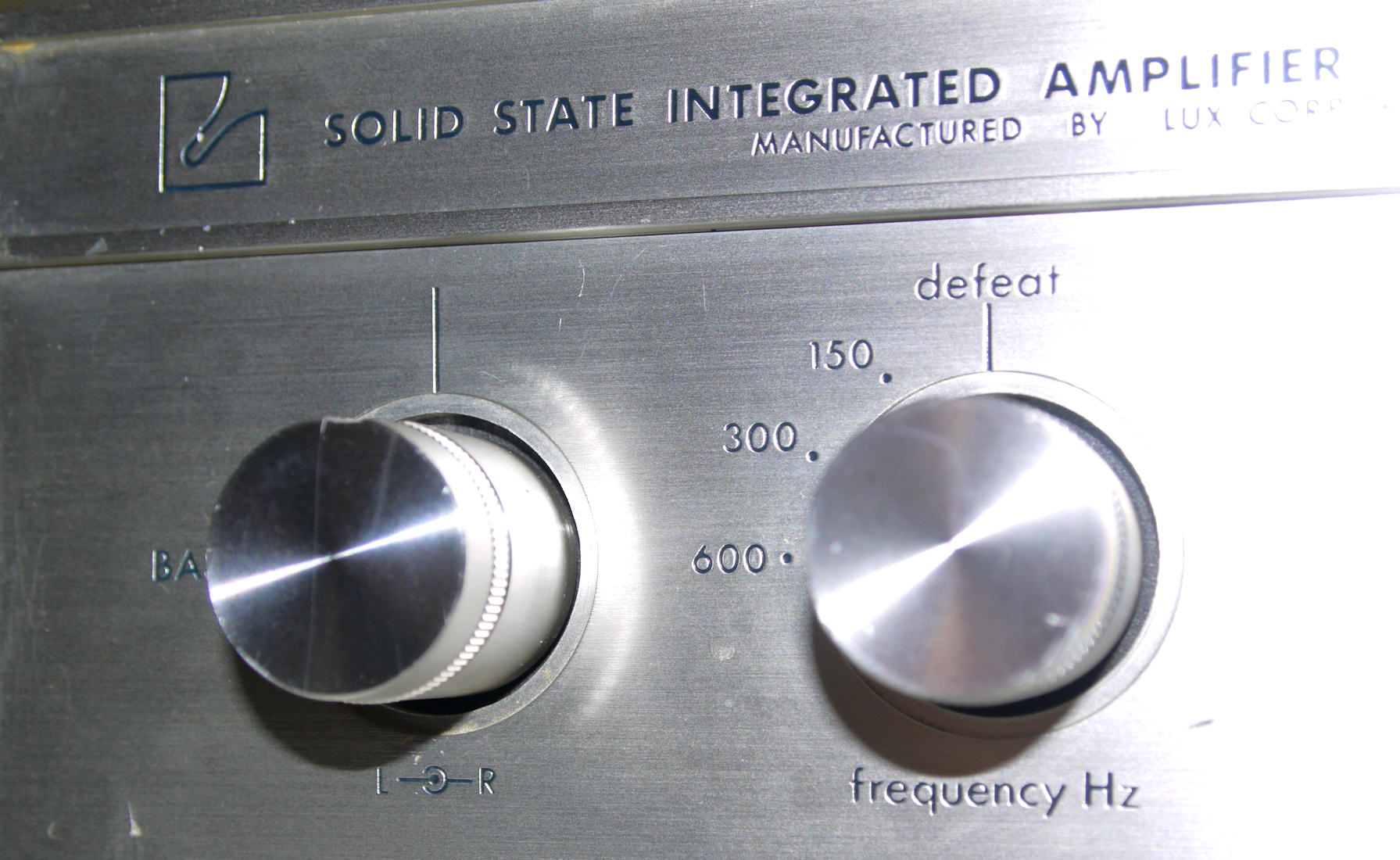
Sound:
The sound of this amp is good and stable. A pleasure to listen to.
The unrestored original Luxman SQ505x after 45 years of use still going strong, a high quality Luxman product ^

Transistors used by Luxman and other brands ^
![]()
![]()
© Hans Hilberink - PE1MMK ® 2003 - Last update: 10-08-2019.